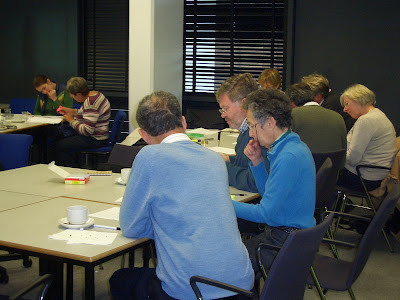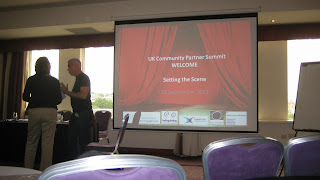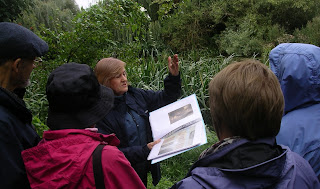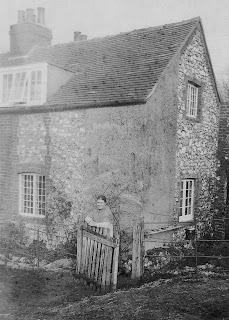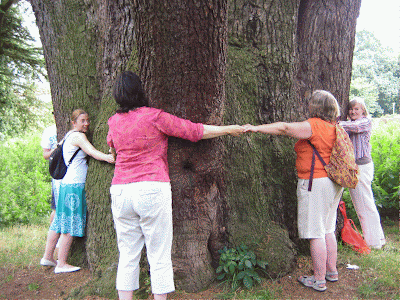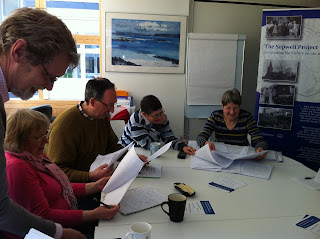The official launch of our community project took place last Saturday, 18th May in St Julian's Church, Abbots Avenue, St Albans. We combined the launch with a memories gathering exercise as well as celebrating the 10th anniversary of the Sopwell Residents Association.
There must have been about a hundred people who attended over the three hours it lasted. For us, it was a success to have been able to attract that many, and the church was equally pleased.
Our goal was to reach out to all members of the community to persuade them to share their memories and join in the fun and we certainly achieved that. There were several older residents willing to tell their stories, some of whom we have already interviewed before. However, we were pleased to see the younger generations, including children, coming forward to join in.
 |
| Video booth with willing volunteer |
As well as a "Memory Wall" on which to leave a memory, we borrowed a video booth from the University of Hertfordshire so that those wishing to share a memory could be recorded. If their memories appeared interesting or relevant, they were encouraged to agree to a follow up interview at a later date. This proved to be very popular with everyone, including children. It is nice to see and hear a child saying spontaneously how lovely it is living in Sopwell because it has wonderful historic places to visit. The message is really getting through!
Continuing with the theme of children, the SRA held a children's painting competition for three age groups. We asked all three local primary schools to get involved which they did very enthusiastically. The theme of the painting was Sopwell as we wanted to encourage the children to become aware of their local area and hopefully show their appreciation in art form.
We had about 80-90 entries quite a few of which were of the same subject. The teachers must have suggested that the ruins in the Nunnery Open Space would be a good subject as the majority of the entries were of the ruins. Another favourite was the river, the paintings suspiciously all looking the same until we realised that they were copying a photograph.
 |
| Mayor looking at portraits |
However there were also some other interesting subjects to judge. One enterprising class decided to paint portraits of the Mayor. Although this may appear to have been irrelevant, it wasn't as the present Mayor is a Sopwell Councillor and a governor of the school in question. The judges spent several hours judging the entries and came up with some worthy winners. We gave prizes to the three winners and runners up. However, because the Mayor's portraits were so amusing, we decided to award prizes for this category. These were judged by the Mayor on the day.
 |
| Discussing the banner |
We had several tables of displays of old photographs and maps, rolling displays on computers and our two splendid banners to trigger memories and discussions.
 |
| Artifacts table |
We also had a table display of memorabilia: artefacts dug up in gardens and allotments or found near the ruins or old buildings such as old coins, milk bottles and other small bottles, roof tiles and tesserae, oyster shells, and clay pipes. The eagerly expected mammoth bone turned out to be a fossilised mammoth's tooth which was no less splendid.
Another highlight was to hear the Mandeville school choir sing three beautiful songs which brought tears to many eyes. There was a really clever magician, Tony Middleton, also a local, who entertained the smaller children for the last hour. After the formal launch, the Mayor of St Albans, Councillor Eileen Harris and myself cut the wonderful chocolate cake made by a 16 year old, another local, Jed Armstrong.
 |
| Mandeville Children's Choir |
 |
| Magician Tony |
 |
| Cutting the cake |
The event was filmed, including a number of video interviews, so, eventually, we will have a real digital record of what everyone said was a wonderful community occasion.
 |
| Video interview |
You can see more photos in our
album about the launch event on Facebook.
--
Sandy Norman






